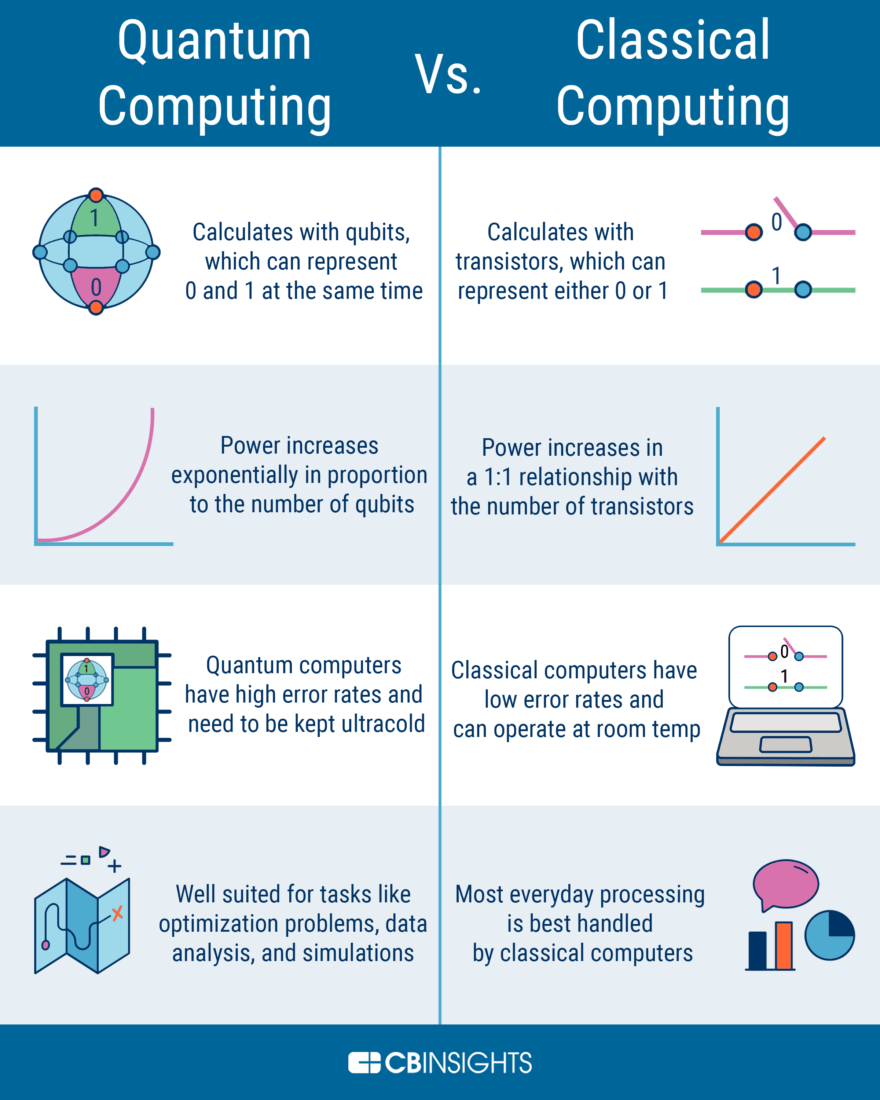The quest for more efficient and powerful computing paradigms has led humanity down numerous intriguing pathways. Quantum computing, heralded for its potential to revolutionize problem-solving capabilities through the principles of quantum mechanics, is often viewed as the apotheosis of computational advancement. Nevertheless, it is prudent to explore viable alternatives that possess unique qualities and applications. Among these alternatives, classical computation, neuromorphic computing, and optical computing emerge as promising contenders, each offering distinct advantages while also showcasing the rich tapestry of innovation in computational science.
At its core, classical computation, the cornerstone of modern computing, may appear as a simple and seemingly exhausted avenue in light of quantum computing’s allure. It is akin to a majestic oak tree—deeply rooted in the history of computation, offering stability and reliability. Classical computing utilizes bits as the fundamental unit of information, operating through binary systems that execute algorithms with precision. While it lacks the exponential speedup promised by quantum systems, classical computing continues to thrive, especially in realms that demand stringent error rates, standardization, and mature technological infrastructures.
Consider the phenomenal strides made in supercomputing, where classical processors harness vast arrays of computing power. A supercomputer can resemble a well-orchestrated symphony, where each processor serves as a musician, contributing to a harmonious output that can solve complex problems ranging from climate modeling to astrophysics. Not only does classical computing maintain robust application viability, but its continuous evolution—characterized by advancements in architectures such as multi-core processors and parallel computing—ensures its relevance in the computational landscape.
In stark contrast, neuromorphic computing presents a paradigm shift, drawing inspiration from the neural architectures of the human brain. Picture a cerebral labyrinth, alive with the incandescent flashes of neural pathways – this is the essence of neuromorphic designs. This alternative transcends the rigid binary constructs of classical computing, employing spiking neural networks that emulate the way biological systems process information. Neuromorphic systems leverage the inherent parallelism of neural activities, promising enhanced efficiency for specific applications, such as pattern recognition, sensory processing, and real-time decision-making.
The beauty of neuromorphic computing lies not only in its mimetic design but also in its potential to bridge the chasm between computation and cognition. As it flirts with notions of artificial intelligence, neuromorphic approaches could ultimately yield systems capable of learning and adapting in ways reminiscent of human thought. Moreover, the low energy consumption characteristic of these systems hints at a future where machines live harmoniously with their ecological surroundings— a serene coexistence that belies the energetic voracity of classical computing paradigms.
Shifting gears towards optical computing, one encounters yet another exciting dimension that may illuminate the realm of computation. Optics, the discipline of light manipulation, offers a tantalizing alternative that departs from traditional electronic circuits. Imagine a landscape brimming with rays of light, each beam carrying an encoded quanta of information—this illustrates the essence of optical computing. By exploiting the properties of light, such as its speed and wave nature, optical computing holds the promise of achieving unprecedented computational speeds, potentially far surpassing both classical and quantum systems in specified tasks.
Optical computing utilizes optical components such as waveguides and photonic crystals to process and transmit information. Merging optics with computing equips systems with the capacity for simultaneous multi-channel data processing, akin to an intricate weave of threads forming a vibrant tapestry. The parallel processing capabilities inherent in optics render them immensely advantageous for operations in telecommunications and high-speed data transfer. As the demands for data throughput escalate, optical computing offers a glimpse into a future where communication and computation intertwine seamlessly.
Moreover, the challenge of thermal management is significantly reduced in optical systems, positioning them as a competitive alternative in an arena where heat dissipation often truncates processing efficiency. This technological evolution echoes the metamorphosis of organic matter, as light, in its imperishable essence, reintegrates with computation to engender performance unbound by conventional constraints.
While each alternative provides unique attributes, it is imperative to recognize that the landscape of computation is inherently multifaceted. The synergy of these paradigms might beckon forth a hybridized future, wherein quantum, classical, neuromorphic, and optical computing intermingle to craft solutions that transcend existing capabilities. The metaphor of a vibrant ecosystem illustrates this interdependence; various species thrive by coexisting in myriad relationships, each contributing to the resilience and adaptability of the system as a whole.
The exploration of viable alternatives to quantum computing underscores a broader truth in scientific inquiry: the promise of innovation often resides in the uncharted territories that beckon us beyond our current understandings. There lies a palpable excitement in navigating these alternatives, not solely for their immediate applicability, but for their potential to herald transformative breakthroughs that will shape the gearworks of future societies. As these computational frontiers unfurl, it is vital to embrace the symphony of modalities to cultivate an environment conducive to holistic progress—one where diverse computational approaches resonate harmoniously, each illuminating the path toward an enlightened technological age.
Ultimately, while quantum computing captures the imagination with its potential for unparalleled processing capabilities, it is through the diligent exploration of these viable alternatives that the future of technology will emerge. Whether through the steadfast roots of classical computation, the synaptic elegance of neuromorphic systems, or the luminous prowess of optical computing, humanity stands on the precipice of a new era, rich with possibilities and ripe for discovery.












